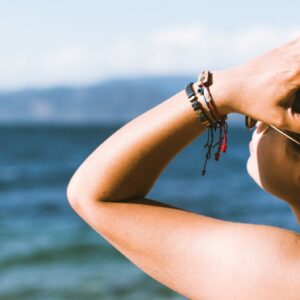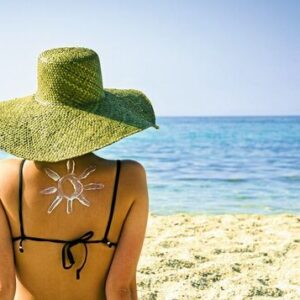Sunscreen Ärzte- und Laserzentrum
9 tips for optimal sun protection
Tip 1: You should protect yourself from the sun no matter where you are!
Sun protection is closely associated with everyone: Kindergarten children, school walkers, sidewalk café-goers, recreational and professional athletes, and of course professionals who work outdoors. It’s not just the summer season: winter snow reflects light, wind and freezing temperatures make the sun appear stronger. In spring, the pleasantly warm sun shines on the sun-kissed winter skin and the intensity increases rapidly. In summer, even if the sky is cloudy, you can not protect yourself from ultraviolet rays.
Tip 2: Avoid the sun when the sun is falling from the sky!
This is especially true during the lunch break. Ultraviolet radiation is strongest between 11 am and 3 pm. Let your skin rest during this time and avoid sun exposure. For sports, walks, gardening, and any other activity you want to do outdoors, the morning and afternoon hours are much better!
Tip 3: You can see the sun even in the shade!
The reflection of water and sand increases the risk of sunburn. In a cool place, almost half of the direct sunlight still shines on the skin. The stronger the ultraviolet radiation, the shorter the skin’s own protection time. The intensity of ultraviolet radiation increases from the Earth’s poles to the equator and increases with altitude: an increase of about 10% per 1,000 meters. Whether from ocean or swimming pool water, it reflects the sun’s rays and increases the skin’s UV exposure by 90 percent.
Tip 4: Apply sunscreen to the bare skin area – depending on skin type!
The sun protection factor (SPF) indicates the ability of a sunscreen or sunscreen product to resist UV-B radiation. A high SPF represents a high level of protection and a low SPF represents less protection. On the product you will find SPF as a value and corresponding protection levels: Basic Protection and Medium, High and Very High Protection. For sensitive skin prone to sunburn, high protection is the first choice (at least SPF 30). The medium protection level (around SPF 20) is sufficient to meet the needs of darker skin types. If in doubt, choose a higher protection level and do not stay in the sun for so long! Make sure you have a balanced UV-A protection (UVA logo).
Tip 5: Apply plenty of face cream in time before going out!
If you put cream on your skin indoors, it is already protected when you go out. Sunscreen, milk, gel or spray do not require preparation time! Be generous with your application! This is the only way to achieve the overall protection effect. Don’t forget your ears, nose, upper lip, scalp, décolleté, neck, shoulders and the back of your feet! These “sun terraces” are particularly sensitive to light and most susceptible to ultraviolet radiation.




Tip 6: Clothing is the best protection against sun damage. Don’t forget your hat!
The fabric effectively protects the skin from UV rays. A transparent material, which is thick and tightly woven and lets some visible light through, also lets UV light through. Note: Cotton does not absorb UVB rays very well and will cause sunburn. Polyester fabrics, on the other hand, offer relatively good protection. Color and fit also play an important role. Loose, dark clothing is good for light, tight clothing.
Tip 7: The eyes must also be protected. Wear sunglasses!
If you do not protect your eyes from UV rays, you risk total damage to your cornea and retina. The short-wave UVB component of sunlight specifically attacks the cornea and conjunctiva. When buying, consider the size of the glasses. If you use small round glasses, there is a risk of UV rays getting into your eyes. The color of the glass should also be considered. Preferably brown or gray.
Tip 8: Remember to reapply lotion frequently, especially when playing sports or games!
Frequent exposure to the sun, especially for long periods of time, in direct sunlight while running, cycling or playing soccer. The best way to protect yourself first is with sunscreen and a waterproof product. Regardless of your sunscreen, you need to reapply it regularly. Remember: swimming, sweating, and exposing yourself and your clothes to the skin will reduce your protection.
Tip 9: Apply cream generously and in good time – before you go outside!
If you put cream on your skin indoors, it is per se secured when you go outside. Sunscreen, -milk, -gel or -spray do not need any lead time to work! Be generous with the application! Only in this way the full protective effect is nevertheless achieved. Do not forget the ears, nose, upper lip, scalp, décolleté, neck, shoulders and the back of the feet! These “sun terraces” are extraordinarily sensitive to light and are the most exposed to UV radiation.
